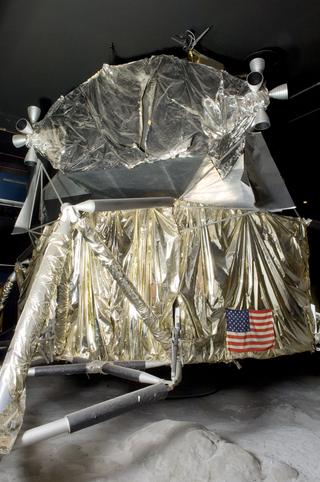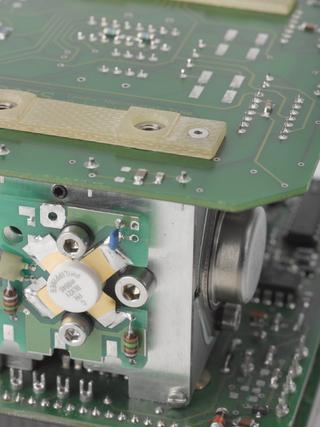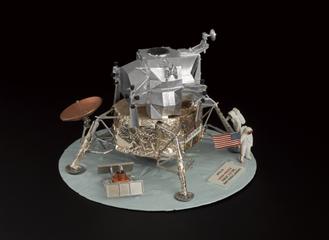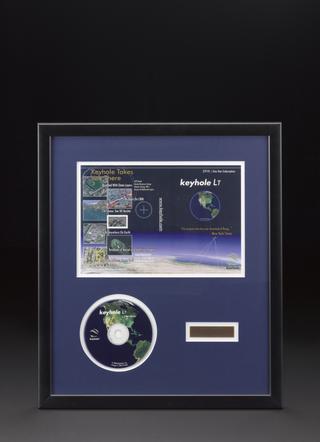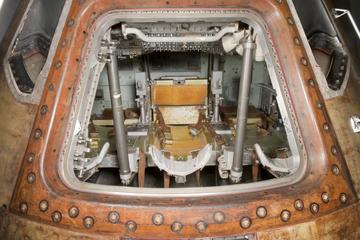





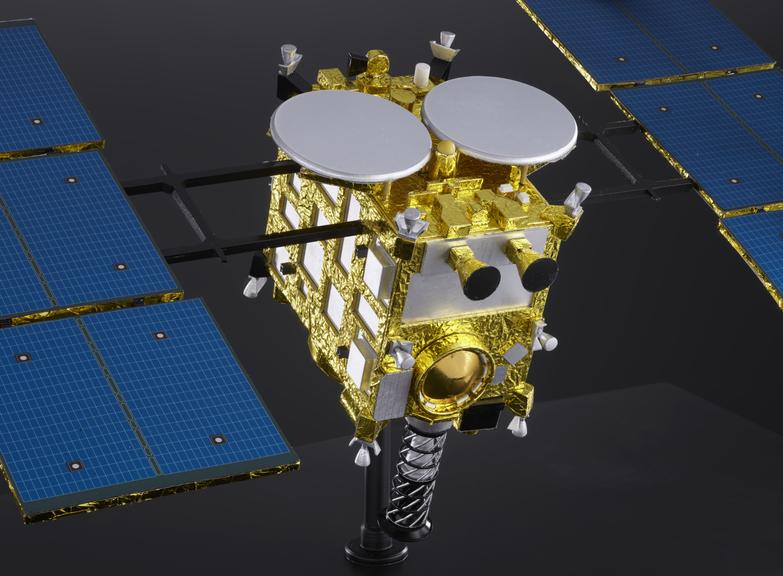
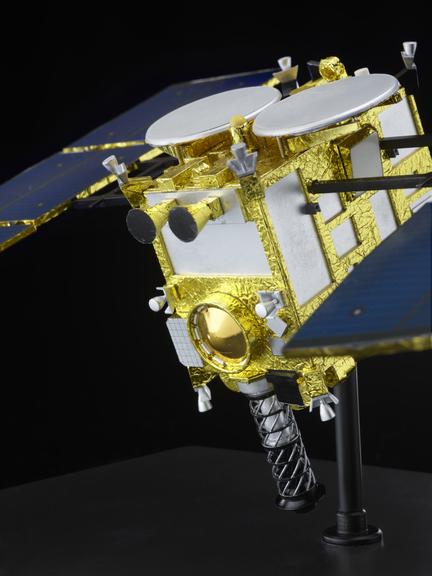
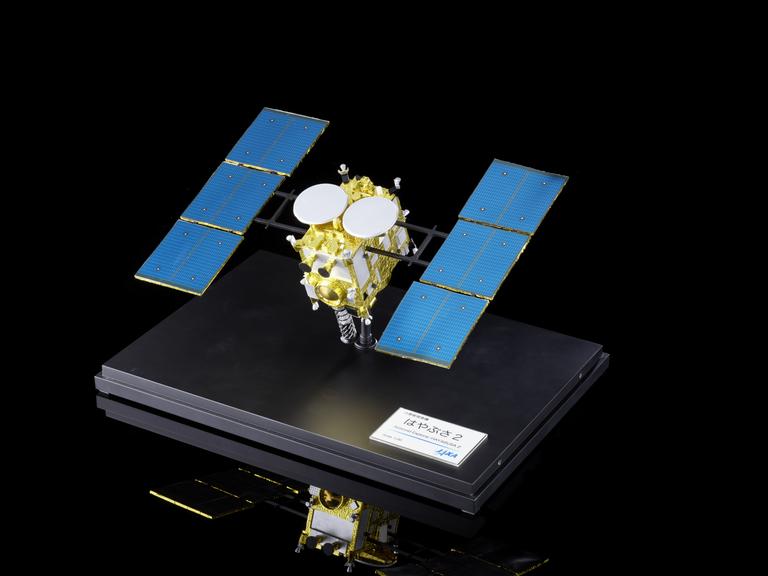
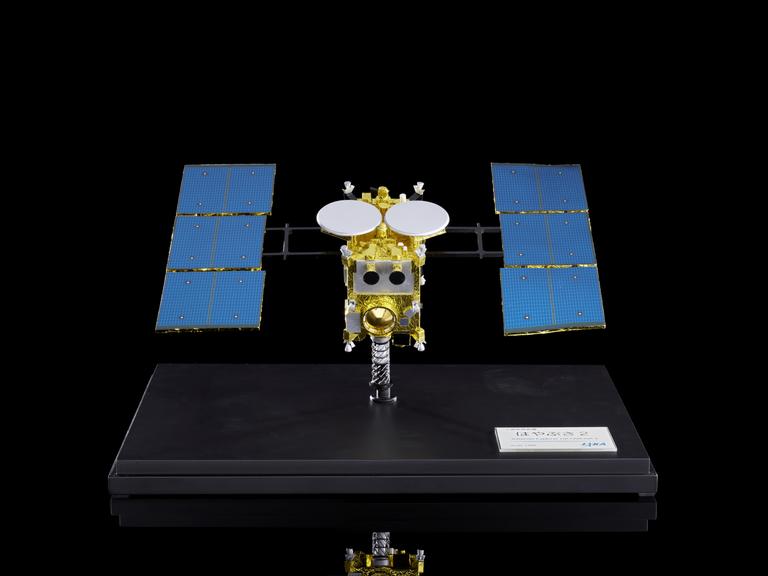
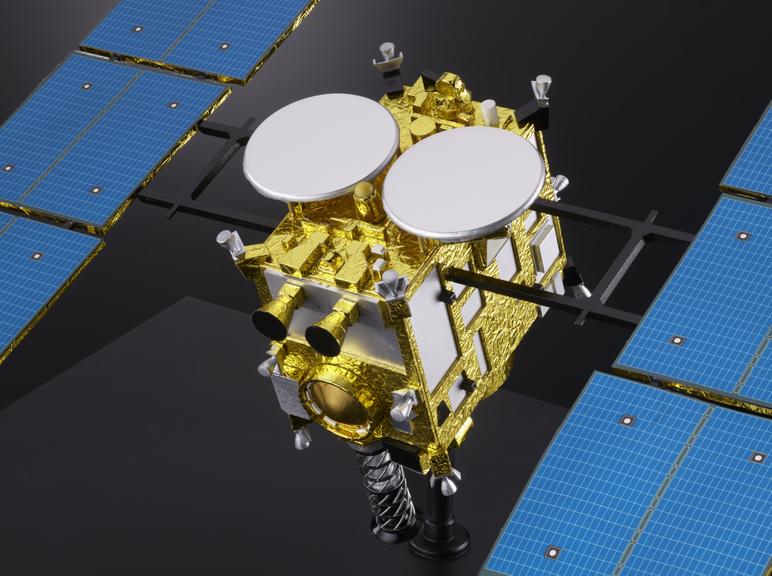
Model of JAXA's Hayabusa2, robotic asteroid sample return spacecraft, scale 1:20.
Hayabusa2 launched in 2014, embarking on a mission to collect samples of the asteroid Ryugu and return them to Earth for analysis. In total, 5.4g of matter was collected from the asteroid Ryugu - equal in mass to about 5 paperclips. Hayabusa2 travelled billions of kilometres to obtain these samples and bring them back, parachuting the canister down to Earth in 2020.
The initial journey to the asteroid Ryugu took around 3 years, and had been carefully planned to make use of Earth's gravity to 'slingshot' the spacecraft towards its target. Once Hayabusa2 arrived at Ryugu, it spent a few months investigating the asteroid with an array of remote sensing equipment. It also undertook an experiment simulating an impact on the asteroid, by firing a 2kg lump of copper called an impactor into Ryugu's surface. Instruments on board observed any changes in the asteroid’s surface, and collected material from both above and beneath the surface to compare. Copper was chosen for the impactor so that it would be easily distinguishable from any material on Ryugu.
Hayabusa2 was the first ever mission to deploy rovers to move around on an asteroid. The information they gathered can tell us a lot about conditions on the surface, and properties such as gravitation and magnetism.
Most importantly, Hayabusa2 collected samples from Ryugu's surface. It used a mechanism called a sampler horn, a 1m long tube extending from the body of the spacecraft.As the spacecraft descended, the end of this tube touched the asteroid’s surface, sending a signal to trigger the sample collection process. Tiny metal projectiles were fired down the tube to stir up loose material on the surface, which was captured inside the tube to be transported back to Earth.
After dropping off these samples in 2020, Hayabusa2's mission was extended. It's current mission, called Hayabusa2♯ (read “Hayabusa2 Sharp”), will send it to investigate another asteroid, due to rendezvous in 2031.
Details
- Category:
- Space Technology
- Object Number:
- L2023-27
- Materials:
- metal (unknown), plastic (unidentified) and acrylic
- Measurements:
-
overall: 220 mm x 350 mm x 240 mm,
- type:
- model
- credit:
- Lent by JAXA ISAS

